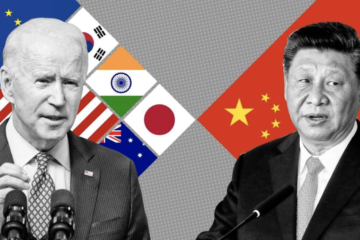The statue represents the estimated 50,000 – 200,000 Korean girls and women who were forced into sexual slavery by the Imperial Japanese Army between 1932 and 1945. There is a euphemistic name for these women: ‘comfort women’. In the decades following the Second World War, both the South Korean and Japanese governments remained quiet on these comfort women, but for vastly different reasons. For the former, the rape of these women is a deep scar on the national psyche. For the latter, meanwhile, it is a remnant that they would rather forget, a programme advanced by the incumbent Abe administration.
While most victims have been living in silence, unable to speak of the atrocities they experienced due to shame and humiliation, several survivors have been speaking up.. Their voices have had significant implications on the bilateral ties between South Korea and Japan.
One such victim and campaigner, Lee Gwi Nyeo, passed away just recently on 14 December, at the age of 92. Japanese documents reveal that Lee was only 17 when she was forced to work in military brothels in China.
There are now only 25 registered Korean survivors.
One may wonder how Lee, a young Korean teenager, ended up in a foreign country in a military brothel. More will be said on this below.
First of all, it is necessary to understand how the forcible recruitment of these women began. Following ‘The Rape of Nanjing’ in 1937-38, during which Japanese soldiers raped between 20,000 to 80,000 Chinese women and massacred between 40,000 and 300,000 civilians, the Japanese leadership ordered the Imperial Japanese Military to create and expand its ‘comfort stations’. This systematic extension aimed to restore the “honour of Japan”.
Studies have revealed that while comfort stations had already existed in 1932 in China, “military regulation of comfort stations changed them into facilities for sexual slavery”. These ‘comfort stations’ also had more to do with just recovering Japan’s international image. Enslaving women in these stations, in fact, aimed to prevent Japanese soldiers from committing rape in local areas. Such acts fuelled anti-Japanese sentiment and stimulated resistance, and thus rapes were sanctioned within these stations.
Women were usually trafficked from distant areas, so they were forced to comply and could not escape. They were therefore unable to spill military intelligence. Finally, ‘comfort stations’ aimed to keep their military personnel healthier as women would be under the oversight of Japanese military doctors.
In light of these aims, the case of victim Lee Gwi Nyeo becomes clearer. Although Lee does not elaborate how she ended up in China, her plight can be understood with reference to a similar case. In an interview with Asian Boss, an organisation that aims to reveal a deeper understanding of Asia, 93-year-old survivor Kim Bok Dong recounts her experience:
“I was going to a factory that made soldier’s uniforms”. Or at least, that was what 14 year-old Kim Bok Dong was told by Japanese government officials. Her mother was forced to accept this ‘recruitment’, unaware of what really lurked behind Japanese intentions. Her arrival in China sparked a brief discussion among Japanese military officers on finding that she was only 14. Yet, they sent her to a ‘comfort station’. The first time Kim Bok Dong was raped led her to “try to commit suicide” by drinking bottles of the strongest alcohol. Knocked unconscious, she was revived by the doctors on site, and to this day her “stomach is permanently damaged”.
On Saturdays, Kim says she was forced to work from noon to 6pm. “They [Japanese soldiers] stood in queues… If there’s a delay, the guy next in line starts banging on the door”.
“It was continuous…I did it so many times a say that I lost count…By 5pm, I couldn’t get up. I couldn’t walk properly,” she lamented. “On Sundays I had to have sex from 8am to 5pm,” Kim continued
Kim finally returned home at the age of 21, not from a factory that made military uniforms, but from a station that forced her to endure seven years of sexual slavery. Asked if she told her family of what had happened, Kim replies with a question: “How could I have told them about my experience?” After finally confiding to her mother, who was curious why Kim would not marry, she remained silent on that issue.
Kim Bok Dong’s testament reveals the extent to which she suffered throughout her youth and in the later stages of her life. And despite similar testimonies have been given by other survivors, some have questioned their authenticity.
Toshio Tamogami, a former chief of staff of Japan’s air force, is perhaps the most prominent Japanese revisionist. He asserts that these testimonies from ‘comfort women were ‘fabrication[s]’. “As a defeated nation,” Tamogami argues, “we only teach the history forced on us by the victors”.

This is a view, however, that is controversial in Japan. Masayoshi Matsumoto served as a medic in northwest China at the age of 20 in the Imperial Japanese Army. In an interview with the BBC’s Rupert Wingfield-Hayes, Matsumoto informs him that his job was to check the comfort women in his unit for sexually transmitted diseases. Such testaments appear to end the debate surrounding the existence of comfort women for good.
Other Japanese right-wing hardliners, however, insist that comfort women were paid prostitutes, not victims. Japan’s Prime Minister Shinzo Abe, for instance, has repeatedly said there is no evidence these women were coerced or that the Japanese military was involved in their recruitment and confinement, implying these women were there voluntarily. On this subject, Matsumoto says “It’s ridiculous… Mr Abe speaks as if this is something he witnessed, but he didn’t. I did.”
When Kim Bok Dong was asked to talk about her thoughts on these claims, her reply was: “Is that what a 14-year-old does to make money? How could I have thought about selling my body at that age? The evidence is all there but they tried to hide it”.
In 2015, Shinzo Abe’s government pledged to pay 10 billion Korean Won (£5.6 million) in reparations to a fund under South Korean administration for the remaining victims. But South Korea would be required to remove the ‘comfort woman’ statue that had been erected outside the Japanese Embassy in 2011. This quid pro quo saw both nations consider the matter “finally and irreversibly” resolved.
This deal under the impeached Park Geun Hye government has been heavily criticised. Shinzo Abe did not make any public apology to the comfort women, nor did he acknowledge or assume state and legal responsibility. Given that Abe occupies the premiership in Japan, the highest political office in the country, critics have questioned the sincerity behind this deal.
The secrecy into which the deal was negotiated has also been the subject of intense criticism among South Koreans. Public opinion was ignored, and the comfort women themselves were not consulted. The manner of this negotiation, and its end product, has angered South Koreans to the extent that the incumbent Moon Jae In government is looking for a way to scrap the deal.
Former comfort women have voiced their anger too:
“When Park Geun Hye was president, if she had consulted with us on how to resolve this issue, we would have been happy to provide solutions. But without even saying a word to us, our previous administration just reached a deal on their own….what kind of bastards would reach such a one-sided deal? That kind of deal is not what we were fighting for.”
These were the angry words of Kim Bok Dong. Likewise, Lee Ok Seon, another victim of the Imperial Japanese Army who was forced into a brothel in China, said:
“Japan brought the money to (South) Korea to reach an agreement. That money was given to us to shut our mouths up. That’s wrong. I felt good when they got rid of the foundation.”
Following public outrage and intense hostility to the deal from the survivors themselves, the Moon Jae In government dissolved the fund foundation established to provide financial assistance to former wartime sex slaves in November 2018. Unsurprisingly, Korean-Japanese relations have seen a marked deterioration, with the South Korean ambassador to Japan summoned by the Japanese Foreign Ministry to explain the move.
As aforementioned, there are only 25 registered survivors in South Korea. In interviews, these survivors have expressed a recurring theme when asked what they wanted from Japan.
Kim Bok Dong wants “an apology from Japan for having dragged us away, and making us suffer. I want a formal apology. They should say ‘What we did was completely wrong, and we’ll correct our history textbooks.’ And say to us, ‘we sincerely apologise’,” Dong urged. “Money, is not the issue,” she concluded.
Similarly, Lee Yon Soo wants Shinzo Abe to “face the truth of the crimes that were done to us.” “I was robbed of my youth, and I want him to apologise before I die,” she said.
A personal apology from Shinzo Abe himself to the victims, it appears, is what these survivors want, not an apology that was allegedly offered to a former impeached president in a private phone call. This request, though, will unlikely be met. We can only wait and see how the discomforting testaments of the comfort women will further impact on Korean-Japanese relations. And as we wait, so will the statue of the young girl sitting outside the Japanese Embassy.


